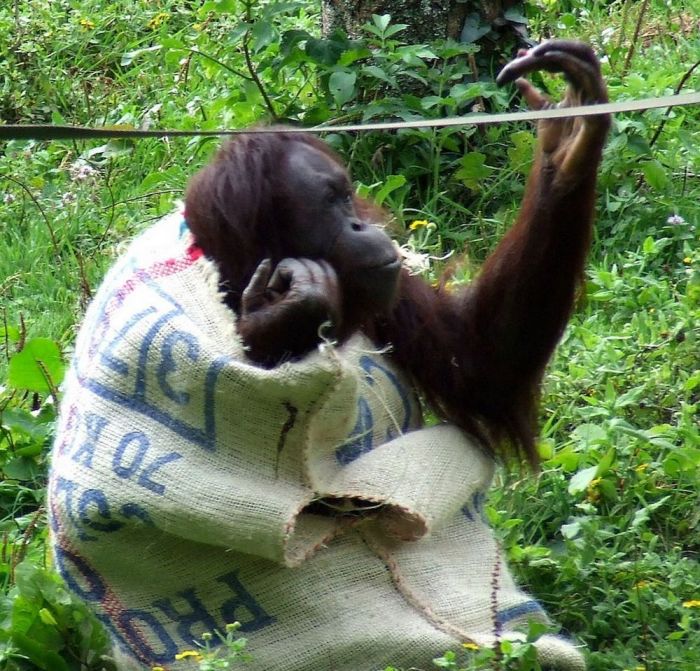|
|
Orangutan Wears Sack Clothes
|
During dispersal, females tend to settle in home ranges that overlap with their mothers. However, they do not interact with them any more than the other females and they do not seem to form bonds though affiliation, grooming, or agonistic support. Males disperse much farther from their mothers and enter into a transient phase. This phase lasts until a male can challenge and displace a dominant, resident male from his home range. There are dominance hierarchies between adult males that regularly encounter each other with the most dominant males being the largest and having the best body conditions. Adult males dominate sub-adult males. Both resident and transient orangutans aggregate on large fruiting trees to feed. The fruits tend to be abundant, so competition is low and individuals may benefit from social contacts. Orangutans will also form travelling groups in which members coordinate travel between food sources for a few days at a time. These groups tend to be made of only a few individuals. They also tend to be mating consortships, each made of an adult male and female traveling and mating.
• Reproduction and parenting
Male orangutans exhibit arrested development. They mature at around 15 years of age by which they have fully descended testicles and can reproduce. However they do not develop the cheek pads, pronounced throat pouches, long fur or long-calls of more mature males until they gain a home range, which occurs when they are between 15 and 20 years old. These sub-adult males are known as unflanged males in contrast to the more developed flanged males. The transformation from unflanged to flanged can occur very quickly. Unflanged and flanged males have two different mating strategies. Flanged males use long calls to advertise their location which attract estrous females. Unflanged males wander widely in search of estrous females and upon finding one, will force copulation on her. Both strategies are successful, however females prefer to mate with flanged males and will seek them out for protection from unflanged males. Resident males may form consortships with females that can last days, weeks or months after copulation.
Female orangutans experience their first ovulatory cycle between 5.8 and 11.1 years. These occur earlier in larger females with more body fat than in thinner females. Like other great apes, female orangutans have a period of adolescent infertility which may last for 1-4 years. Female orangutans also have a 22-30 day menstrual cycle. Gestation lasts for nine months with females giving birth to their first offspring between 14 and 15 years old. Female orangutans have the longest interbirth intervals of the great apes, having eight years between births.
|
|









